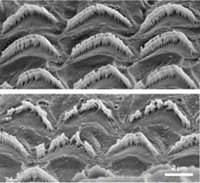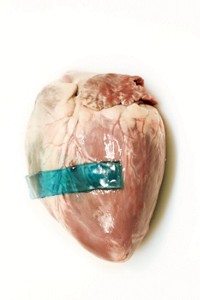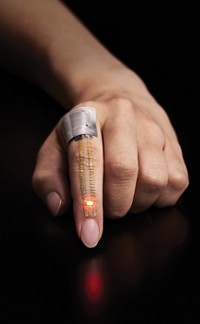Advertisement
Grab your lab coat. Let's get started
Welcome!
Welcome!
Create an account below to get 6 C&EN articles per month, receive newsletters and more - all free.
It seems this is your first time logging in online. Please enter the following information to continue.
As an ACS member you automatically get access to this site. All we need is few more details to create your reading experience.
Not you? Sign in with a different account.
Not you? Sign in with a different account.
ERROR 1
ERROR 1
ERROR 2
ERROR 2
ERROR 2
ERROR 2
ERROR 2
Password and Confirm password must match.
If you have an ACS member number, please enter it here so we can link this account to your membership. (optional)
ERROR 2
ACS values your privacy. By submitting your information, you are gaining access to C&EN and subscribing to our weekly newsletter. We use the information you provide to make your reading experience better, and we will never sell your data to third party members.
Materials
Adhesive tape allegedly helped Tom Brady get to the Super Bowl. Does it work as described?
Athletes use kinesiology tape to alleviate pain and inflammation, but studies are mixed about its effectiveness
by Katharine Sanderson
February 2, 2018

Sports fans may spot an unlikely secret weapon deployed during Super Bowl LII this weekend, and it’s not a slinky move or cunning play. It’s tape.
Some football watchers credit this adhesive, called kinesiology tape, with helping quarterback Tom Brady play after he injured his throwing hand and got 12 stitches about two weeks ago. Despite the injury, Brady led his team, the New England Patriots, to victory in the AFC Championship Game on Jan. 21, winning a chance to play in the Super Bowl.
The colorful tape that can stretch along limbs is a favorite of athletes in all types of sports, who hope that the adhesive will help the body repair itself and function better.
The claims about this tape are numerous. Russell Schleiden, spokesperson for KT Tape, the brand that Brady wore, says that the company’s tape provides fast pain relief and support for muscles and help reduce swelling. Let’s take a closer look.

What is kinesiology tape?
The tape is made from stretchy cotton or synthetic fibers like those found in a lightweight sportswear T-shirt. Some tapes use medical-grade acrylic glues and others use their own proprietary formulations.
Why do athletes stick stripes of the stuff along their limbs and across joints?
Tape manufacturers claim that when applied properly, the tape pulls on the skin as the body moves and creates room for lymphatic fluid to flow more freely to inflamed joints or other problem areas. Lymphatic fluid carries white blood cells around the body and helps clear bacteria and other unwanted or waste products from the body. Tape proponents say that allowing lymphatic fluid to flow more easily should help speed healing and reduce bruising and swelling.
Does kinesiology tape have broader clinical use?
After breast cancer surgery, patients often experience painful swelling called lymphedema, and doctors sometimes use kinesiology tape to try to reduce the swelling and pain.
But evidence that the tape helps for this use is hard to pin down. Jakub Taradaj at the Academy of Physical Education in Katowice, Poland, has studied this application and found that kinesiology tape “is completely useless in lymphedema.”
“However, it could be helpful in sport injuries and posttraumatic edema,” he adds.
What does the research say about athletic use?
The results of medical studies of the tape are mixed. A 2007 investigation looking at baseball players with shoulder injuries found that kinesiology tape helped the athletes recover (J. Electromyogr. Kinesiol. 2009, DOI: 10.1016/j.jelekin.2008.11.003). Other studies have concluded that the tape relieves chronic back pain and lowers the exertion needed to cycle (J. Strength. Cond. Res. 2015, DOI: 10.1519/jsc.0000000000000901).
But other studies muddy the water. A 2015 investigation by a team at Staffordshire University looked at whether kinesiology tape increased blood flow in healthy soccer players who applied the adhesive to their forearms. The researchers couldn’t detect any changes (J. Athl. Train. 2015, DOI: 10.4085/1062-6050-50.9.08).
Roy Cheung of the department of rehabilitation sciences at Hong Kong Polytechnic University has studied whether kinesiology tape enhances muscle performance. “Our results do not support such a notion,” he says. But he doesn’t think the tape is useless. “Kinesiology tape is a very safe intervention and traditionally, sports tape is a good way to limit excessive joint motion,” he says. “A potential benefit may be a placebo effect.”





Join the conversation
Contact the reporter
Submit a Letter to the Editor for publication
Engage with us on Twitter